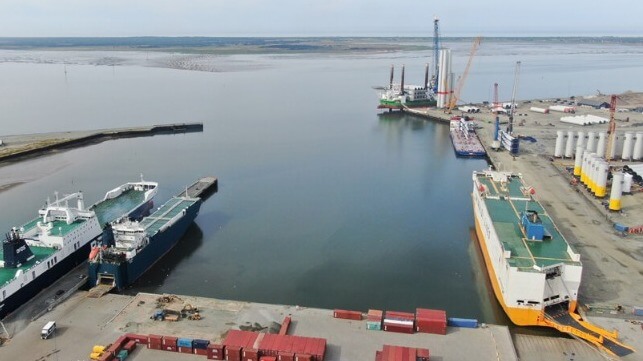Six European Ports Collaborate to Support Offshore Wind Growth

One of the challenges created by the rapid expansion of the offshore wind industry is the need for port facilities to support the industry both during its installation and later for maintenance and operations. In many parts of the world, they are struggling with the need to support the industry while analysts warn that the lack of port capacity could slow the development of the next phase of offshore wind.
In many parts of Northern Europe, which was among the first to develop offshore wind farms, the countries are now planning new phases of growth for the industry. Germany, Denmark, Belgium, and the Netherlands for example have defined a combined target of delivering at least 65 GW of offshore wind by 2030. Industry analysts have warned that it may not be possible to have all offshore wind farms installed in time due to the current port capacity shortage.
Representatives of the six key ports involved with offshore wind in Northern Europe agreed on a unique partnership designed to address the industry’s challenges. The hope is that the unique port collaboration will help to solve the capacity issues for European offshore wind.
The Port Esbjerg in Denmark took steps to forge an alliance that includes Port Oostende (Belgium), Groningen Seaports/Eemshaven (Netherlands), Niedersachsen Port/Cuxhaven (Germany), Nantes-Saint Nazaire Port (France), and Humber (UK).
The Esbjerg Declaration sets the stage for a markedly faster buildout of offshore wind capacity in Europe. The goal of the collaboration is to resolve capacity issues as soon as possible. It expands on an existing agreement that Port Esbjerg previously entered into known as the Green Port Hull initiative.
“The current geopolitical situation in Europe requires that we install even more wind power, and we need to do so fast,” says Dennis Jul Pedersen, CEO of Port Esbjerg. “The Esbjerg Declaration proves that transboundary collaboration is the way forward. To alleviate the present capacity issues, we also need to collaborate with other ports at both the operational and practical level.”
Pedersen highlights that the agreement includes collaborating on practicalities as well as sending a signal to the market that the ports are prepared to do their utmost to promote the green transition through offshore wind. Specifically, representatives of the six ports will meet twice annually to discuss and share insights and knowledge. The inaugurating partnership meeting of the ports will be held at the Port of Esbjerg later this year.
